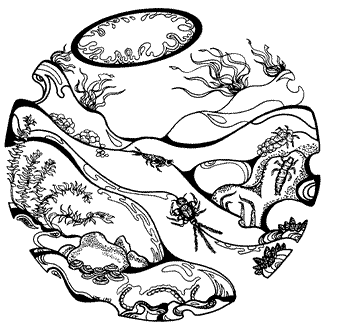 |
Upper Mississippi River Restoration ProgramLong Term Resource Monitoring |
|
 |
||
Macroinvertebrates
|
Background
Mayflies, fingernail clams, and midges have been historically used as indicators of river water quality (Fremling 1964, 1973, 1989; Steingraber and Wiener 1995). An indicator species can be defined as a species that has particular requirements about a known set of physical or chemical variables. Macroinvertebrates also perform an important ecological function by digesting organic material and recycling nutrients (Reice and Wohlenberg 1992). Asiatic clams and zebra mussels were chosen for sampling because of their potential adverse effects on the economy and biology of the UMRS (Tucker 1995 a,b). The ultimate goal of the LTRMP is to improve the understanding and management of the UMRS. That goal can best be achieved by the integration of routine monitoring with experimental research directed at identifying the causes of and solutions to specific problems. Future LTRMP studies will integrate focused analyses of data from all LTRMP monitoring components (limnology, bathymetry, sediments, aquatic plants, and fisheries) with results of experimental studies to identify causes of problems and opportunities for improved management. In 2005, a 5-year plan was developed for the LTRMP assuming a static budget of about $5 million per year over the period. Within this plan, the data collection portion of the Program was reduced to a level that could be accomplished annually over the 5-year period given the budget constraint. This effort, called the "minimum sustainable program," required about $3.7 million in 2005, which will inflate (based on a projected 4.1 % annual inflation rate) to about $4.3 million in 5 years. As part of this restructuring, which was based on guidance from the LTRMP Analysis Team and Environmental Management Program Coordinating Committee, the macroinvertebrate component was dropped from the minimum sustainable program. Future work on invertebrates within LTRMP will be funded as focused research projects to address specific issues of interest to the Partnership. |
Page Last Modified: November 23, 2020


 The objective of the
The objective of the 